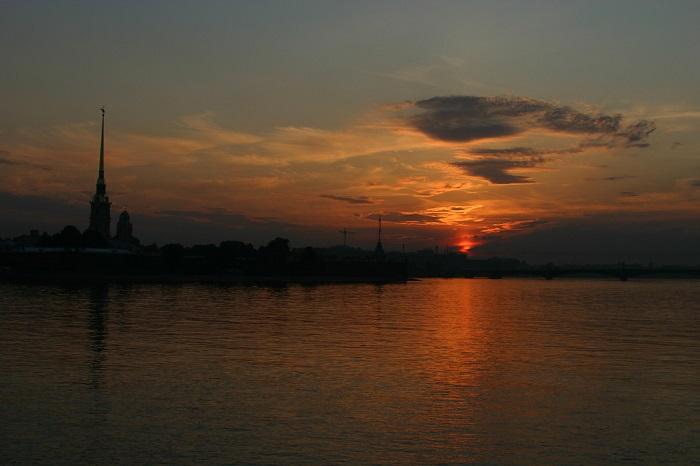Crime scene: St. Petersburg. Plots, murders, ghosts of the murdered and gloomy fame of crime scenes attract tourists no less than the front side of the city on the Neva.

On December 29, 1916, Grigory Rasputin was killed in St. Petersburg. A crime that influenced the further course of Russian history. But in the history of the city such "murders with far-reaching consequences" occurred before and after. Plots, murders, ghosts of the murdered and gloomy fame of crime scenes attract tourists no less than the front side of the city on the Neva.
So, 5 places of the most high-profile crimes of Petersburg, from Mikhailovsky Castle to Ligovka.
Mikhailovsky Castle. The Murder of Paul I
One of the most sinister palaces in the center of St. Petersburg is Mikhailovsky, or the Engineer's Castle. Paradox: built as an unassailable refuge, it became a place of death for the owner . Make out all the seriousness of the fortifications is now prevent the latest changes in the Prizam space. Under Paul, the Place de Constable, on which stands the monument to Peter I, was fenced and surrounded by a moat with water. On the lifting bridges were guns.
Ditches, bastions and guards did not help - the officers of the guard participated in the conspiracy. The major-major of the castle, Argamakov, led the conspirators directly to Pavel's bedroom. The main reason for the conspiracy was that the participants themselves called the madness of the emperor and alarm for the fate of Russia. The composition of the conspirators is impressive: Governor-General Peter Palen, Vice-Chancellor Nikita Panin, Zubov brothers, including the last favorite of Catherine II Platon Zubov, commanders of the four Guards regiments and many officers. It is believed that the son of the victim, the future Emperor Alexander I knew about the conspiracy and approved it, willingly or unwittingly. For the rest of his life he considered himself a parricide.
To kill the king did not seem to be going to, just to remove from the board. But, as the memoirists write, "the fateful catastrophe occurred quite unexpectedly." Pavel tried to hide, he was found and announced that he was arrested. An argument broke out, then Nikolai Zubov struck the first blow with a golden snuffbox. According to one version, Paul was immediately killed by this blow to the head , on the other - he was ugly beaten and strangled with a silk scarf. It was announced that the king "died apoplectic blow". "..off snuffbox ," some people added.
In Michael's Castle Paul lived exactly forty days. In the last days and hours, he seemed to him several times that he was reflected in a mirror in the form of a thief with a collapsed neck, and he felt a chill by the back.
After his death, the palace, according to Pushkin, was "left oblivious." Oblivion does not interfere with ghosts. Two extreme windows from the side of Sadovaya street on the second floor - there was a murder, and there is a figure of the emperor with a candle. Ghosts were seen even by people far from mysticism who were located in the castle of Soviet institutions. They say it inspires unbearable longing and horror.
The alarming beauty of the Mikhailovsky Palace, especially during sunset, contributes to all this. Despite the restoration and grooming of the last time, the chill runs by the neck.
The Church of the Savior on Blood. The murder of Alexander II
The elegant view of the Cathedral of the Resurrection of Christ on Blood - "Russian style", an attempt to repeat the Cathedral of St. Basil the Blessed - contrasts with the event in memory of which it was created. It is hard to imagine that on March 1, 1881, twenty dozen bloody bodies lay on this tourist-ridden place, and the deadly wounded tsar with his shattered legs fell into the hands of the surviving adjutant.
For what exactly "Narodnaya Volya" sentenced the tsar to death, I do not even want to find out. Alexander II was not a tyrant like his father and grandfather, nor a weak man, like his son and grandson. The official name of Liberator is well deserved - slavery in Russia was finally abolished. They tried to shoot him on a walk, in his own palace and on a train, to blow up, ignoring the accompanying victims.
On March 1, Alexander II returned to the Winter Palace. The first explosion only damaged his carriage. When the king came out of it and managed to ask a question to the bomb-dropping Nikolai Rusakov, the terrorist Ignaty Grinevitsky threw a second bomb at his feet. Of course, the guard worked unprofessionally. This is obvious now, but then the event was the first in an endless series of similar acts. And the first in its absurdity and tragedy of the consequences: instead of the already prepared reforms, the "heroes" achieved their own execution, reciprocal terror and everything that followed.
The very place where the king was mortally wounded - part of the grate and cobblestone pavement - is stored inside the temple, under the western dome. The names of the main participants in the conspiracy, Sophia Perovskaya and Andrei Zhelyabov, long wore the nearest streets - Malaya and Bolshaya Konyushennye.
And the ghost world was enriched by another ghost: a dead girl-student goes to the bridge through the canal and waves a white handkerchief - gives the signal for an explosion.